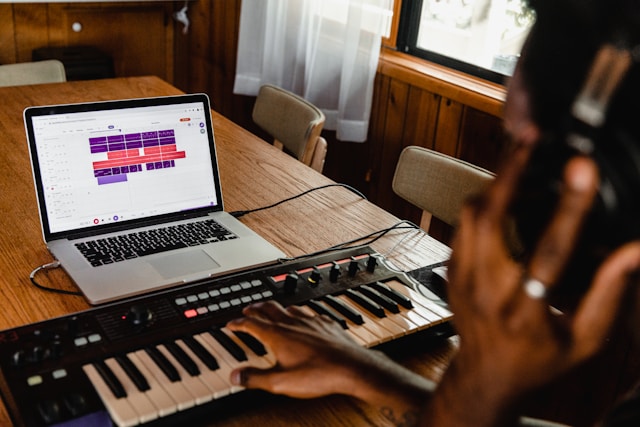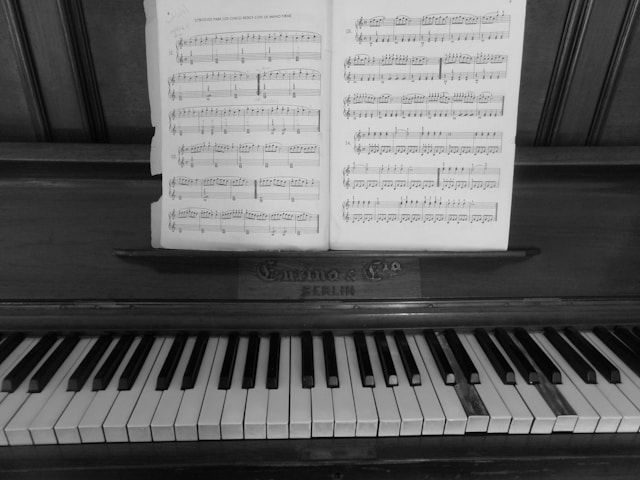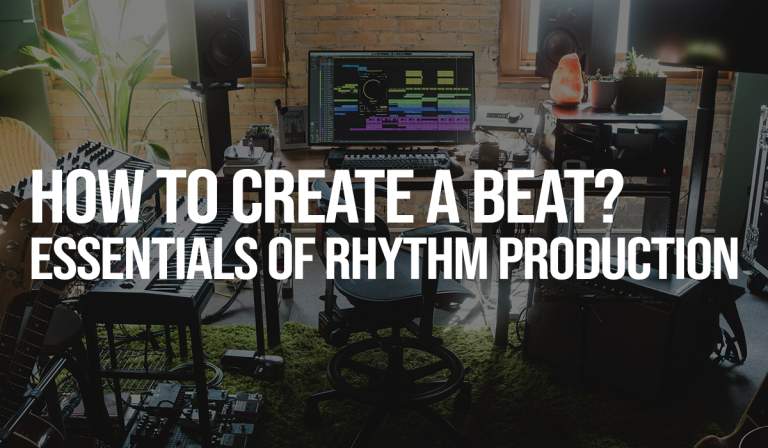Ever wondered how musicians identify the key of a song upon first listen? It’s not magic, but a skill you can master! In this article, we’ll guide you through the soundscape, teaching you how to listen to music and extract key information about the song’s key. We’ll analyze chords, which act like signposts on the map of harmony, highlight the importance of the root note, and demonstrate how musical scales can serve as your compass. Additionally, we’ll include practical exercises to sharpen your relative pitch and offer tips on how modern digital tools can aid you on this musical journey. For beginners, we’ve prepared some advice to help you become a detective in the world of musical keys. Buckle up for a musical adventure full of sounds and harmony!
- How to Listen to a Song to Identify Its Key
- Chord Analysis: The First Step to Identifying a Key
- The Importance of the Root Note in Determining a Song’s Key
- Using Musical Scales to Find the Key
- Practical Exercises for Key Recognition
- The Role of Relative Pitch in Key Identification
- Exercises for Note Recognition: Practical Tips
- Digital Tools for Key Identification
- Tips for Beginner Musicians on Key Recognition
- Frequently Asked Questions
How to Listen to a Song to Identify Its Key
Recognizing a song’s key requires focus and practice, but it’s a skill any musician can develop. Experts suggest starting by listening to the most characteristic chords in the piece and paying attention to harmonic resolution—the point where the song resolves and reaches its harmonic conclusion. This is often the best moment to identify the key, as most songs end on the tonic chord, which corresponds to the song’s key.
Recognizing patterns and common chord transitions is another valuable skill. Experienced musicians often use the transcription method, writing down the chords and melodies they hear, which greatly aids in understanding the structure and key of the piece. Additionally, practicing listening to songs in various keys and trying to identify them without looking at sheet music or tablature can significantly improve your ability to recognize keys by ear. Remember, regular practice and analyzing songs from different genres are essential to developing this skill.
Chord Analysis: The First Step to Identifying a Key
By analyzing chords, you can spot certain patterns that are extremely helpful in determining the key of a song. For example, the presence of tonic, dominant, and subdominant chords can provide valuable clues. Both classical and contemporary music demonstrate that understanding these chord relationships allows for quicker and more accurate key identification.
In practice, analyzing a piece begins with identifying the chords and their functions within the song’s structure. For instance, in songs in the key of C major, you often find chord sequences like C-G-Am-F, reflecting the classic I-V-vi-IV progression. Experienced musicians can quickly identify the song’s key based on these sequences, which is invaluable for improvisation or composing original pieces.

The Importance of the Root Note in Determining a Song’s Key
Starting with the root note, you can reliably determine the key of any piece. This first step requires both theoretical knowledge and a trained ear. The root note, often called the tonic, is the foundation of the entire harmonic structure of the song. Recognizing it allows for a deeper understanding and interpretation of the musical work.
Several methods can help identify the tonic:
- Listen to the Beginning and End – Often, the note on which the song starts and ends is its tonic.
- Pay Attention to the Bass Line – The bass line frequently emphasizes the root note, especially at cadential points.
- Chord Analysis – Identify the chords in the piece and look for patterns that point to the tonic.
Possessing the skill to recognize the root note is invaluable in many aspects of creating and performing music. It allows not only precise key identification but also aids in improvisation, composing, and arranging pieces. This knowledge opens up a deeper understanding of the musical language and enables a more conscious and expressive use of its possibilities.
Using Musical Scales to Find the Key
A closer look at musical scales reveals that each has a unique set of notes that can help identify a song’s key. Major and minor scales are the two basic types every musician should start with. For instance, if a song primarily uses notes from the C major scale, its key is likely C major. The same applies to minor keys, where identifying the characteristic minor scale is crucial.
Comparing major and minor scales can provide valuable insights. For example, the C major scale contains the notes C, D, E, F, G, A, B, C, whereas the A minor scale (its relative minor) consists of A, B, C, D, E, F, G, A. Both scales share the same notes but differ in their central tone and mood. This illustrates the importance of understanding the relationships between scales to correctly determine a song’s key.
Practical Exercises for Key Recognition
Using absolute or relative pitch significantly eases the identification of musical keys. To develop these skills, dedicate daily time to listening to a variety of songs and attempting to analyze them without an instrument. This exercise involves trying to determine the key based solely on auditory impressions, which can greatly enhance your ability to recognize keys on first listen over time.
Another effective method is regularly playing an instrument and singing. Trying to play a heard song without prior knowledge of its key requires intuitive sense and adaptation, which becomes easier and more natural with time. This exercise not only helps in key recognition but also develops overall musical skills and increases your musicality.

The Role of Relative Pitch in Key Identification
Developing relative pitch for identifying a song’s key is invaluable for any musician. This ability not only facilitates quicker and more accurate key recognition but also aids in improvisation and music composition.
To effectively develop relative pitch, consider these methods:
- Interval Recognition Practice – Regular interval training helps quickly identify the distances between notes, which is fundamental to key recognition.
- Practicing with Songs – Analyzing and trying to identify the keys of familiar songs can significantly accelerate the development of relative pitch.
- Using Music Apps – Various apps offer exercises for developing relative pitch, providing a valuable supplement to traditional methods.
Exercises for Note Recognition: Practical Tips
Enhancing musical skills requires systematic practice and understanding of theoretical foundations. One effective way to improve note recognition is regularly using educational apps and software that offer a variety of interactive exercises. These tools help not only visually identify notes but also improve listening and sound recognition skills. It’s crucial to practice in different keys to better understand musical structures and facilitate transposition. Additionally, practicing with a metronome helps develop a sense of rhythm, essential for any musician. Remember, regularity and patience in practice yield the best results in music learning.
Digital Tools for Key Identification
In the digital age, musicians are supported by numerous apps and software that simplify identifying a song’s key. Experts recommend using tools like tuners and spectrum analyzers that can precisely determine dominant frequencies and indicate the song’s key. This process becomes faster and more efficient, especially useful for complex compositions or working in noisy environments.
Among the most valued by professionals are mobile apps that enable real-time song analysis. Using such tools not only speeds up key recognition but also enhances understanding of the song’s structure and harmony. This allows musicians to work more efficiently on their arrangements and improve improvisation skills, which is invaluable in any artist’s development.
Tips for Beginner Musicians on Key Recognition
Detecting the key of a song requires practice and understanding of some basic principles. Initially, focus on identifying the central note, often the starting or ending note of the song. This note is the anchor around which the entire composition is built. Then, pay attention to the dominant and subdominant chords, which can provide more clues about the key.
Useful steps include:
- Listening to the Song – Try to catch the most frequently repeated notes that might indicate the tonic.
- Chord Analysis – Identify the chords in the song and see which scales contain these chords.
- Using an Instrument – Attempting to play the melody or chords on an instrument can make it easier to discern the key pattern.
These methods, used together, can greatly simplify the process of key recognition, even for those just starting their musical journey.
Frequently Asked Questions
Is there a universal method to recognize the key of any song?
No, there isn’t a single universal method for key recognition because different songs may require various analytical techniques. Combining relative pitch, chord analysis, and scale knowledge is the best approach.
How long does it take to learn key recognition?
The time required to learn key recognition varies based on individual abilities, musical experience, and practice regularity. For some, it might take a few weeks, while for others, several months or longer.
Is key recognition important for all musicians?
Yes, key recognition is a fundamental skill for musicians, regardless of musical genre or instrument. It helps in better understanding song structure, improvisation, and composing music.
Are there any apps that help in key recognition?
Yes, there are many apps and software that assist in key recognition. Some offer chord analysis, note recognition, and relative pitch training features.
How can I practice key recognition daily?
You can practice key recognition by trying to identify the key of songs you listen to, analyzing the notes and chords in the music you play, and using music apps for ear training. Regular practice and exposure to diverse music will significantly improve your skills.











